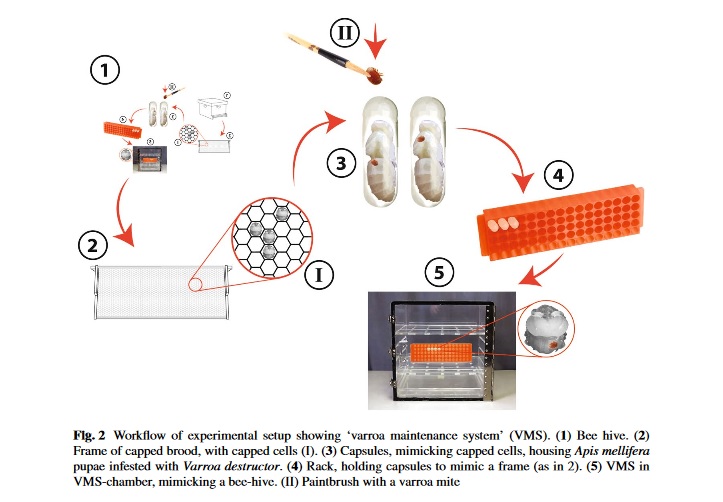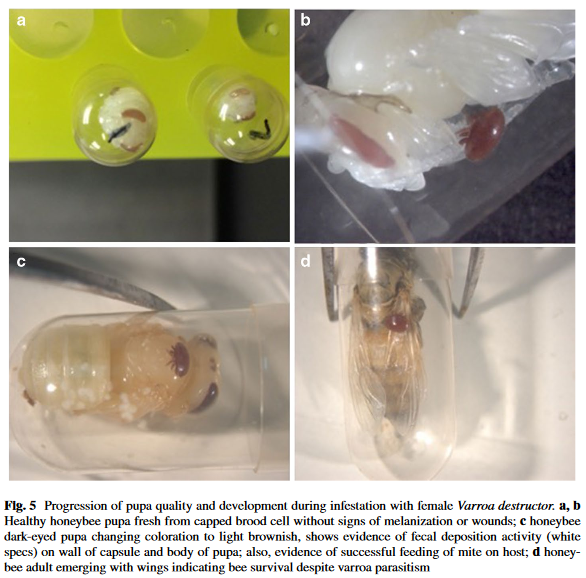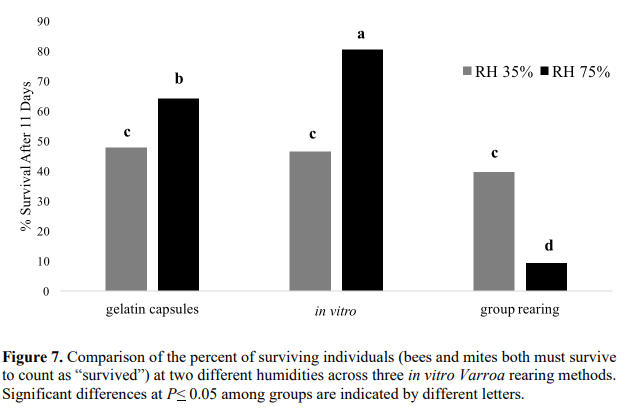
Varroa destructor mites are the greatest threat to honey bees. Due to the elusive nature and difficulty rearing these pests in the lab, much information about the behavior and physiology of Varroa is unknown. It wasn’t until recent that researchers finally began to understand that Varroa are feeding on fat bodies rather than bee blood (hemolymph). Even with the latest developments in our understanding of Varroa, more research is needed to find viable long term management solutions. A variety of techniques have been attempted to rear mites in laboratory settings. It is difficult to simulate a honey bee colony in artificial laboratory breeding environments which is why our understanding of Varroa comes from seasonal experiments rather than year round research in a lab. Being able to rear Varroa year-round would provide tremendous opportunities for researchers to finally tackle this pest.

So far only one approach has been successful at maintaining Varroa survival in a lab setting. Best practices have been achieved using a Varroa maintenance system (VMS). The VMS is accomplished by inserting honey bee pupae and mites obtained from nurse bees into gelatin capsules. These capsules are placed in an Eppendorf tube rack to mimic brood comb. A Nalgene Acrylic Desiccator Cabinet and incubator serve to replicate the humidity and temperature of a hive (Figure 2). The combination of all these components have proven to be the most effective at simulating a natural honey bee colony to rear Varroa mites.

Success at rearing Varroa in a lab setting is dependent upon healthy honey bee pupa hosts, active mites and maintaining as natural of a hive setting as possible. Deviations from ideal hive temperature and humidity result in low Varroa survival. Regular replacement of pupa hosts is critical to ensure healthy hosts and to extend the Varroa life cycle. The emergence of adult worker bees suggests that the VMS provides adequate environmental conditions to maintain host-parasite interactions (Figure 5D).

Follow up research by the University of Florida has validated the success of the VMS system (gelatin capsules) and the importance of maintaining specific environmental conditions in the lab. By dialing in the relative humidity, Varroa survival increases over 10% (Figure 7). Other methods such as group rearing in a petri dish have proven unsuccessful because it does not provide a confined space or proper environmental conditions for Varroa to reproduce and survive. Inability to maintain proper temperature and humidity results in desiccation of the mites main food supply – honeybee fat bodies .
Now that researchers understand Varroa are feeding on fat bodies, they can potentially be reared in the lab year round on artificial diets rich in fat rather than requiring a honey bee host. The success of rearing Varroa in a VMS system provides opportunities to improve our understanding of the Varroa destructor mite. Knowledge gained from replication of this research provides insight into the physiology and behavior of the mites and can be implemented in Varroa mite control methods.
References
Egekwu, N; Posada, F; Sonenshine, D; Cook, S. 2018. Using an in vitro system for maintaining Varroa destructor mites on Apis mellifera pupae as hosts: studies of mite longevity and feeding behavior. Experimental & Applied Acarology: 74(3): 301-303. doi: 10.1007/s10493-018-0236-0
